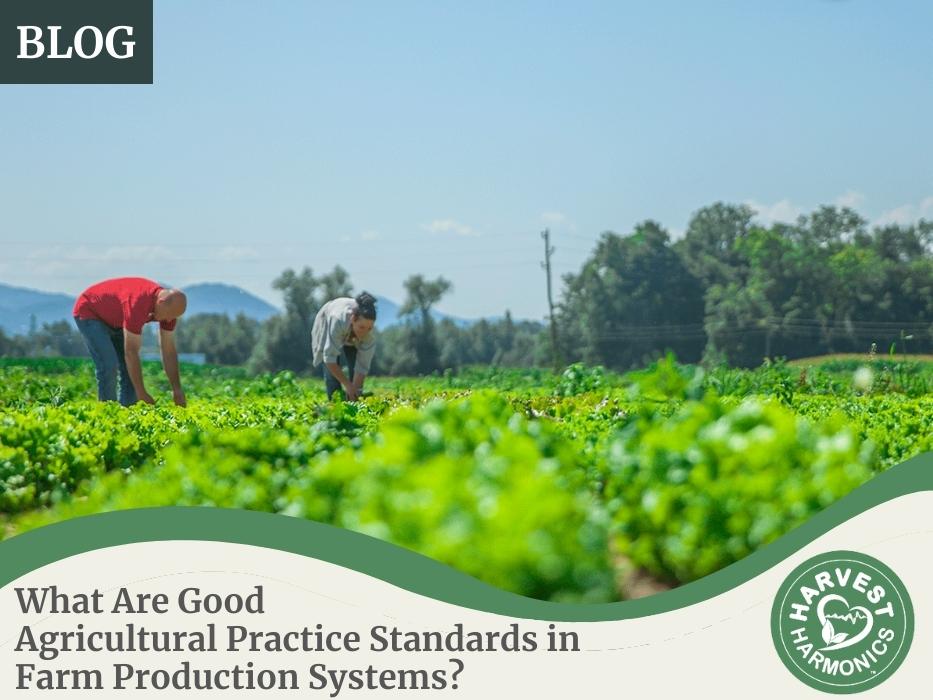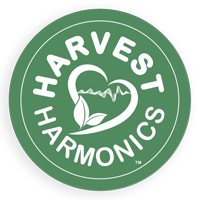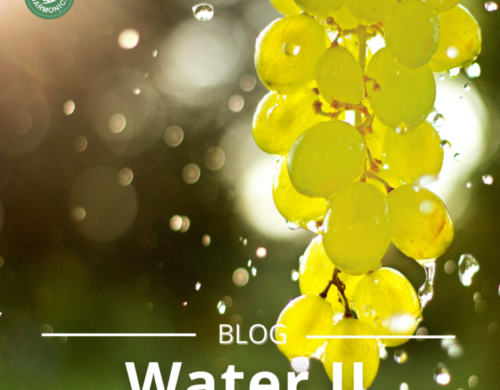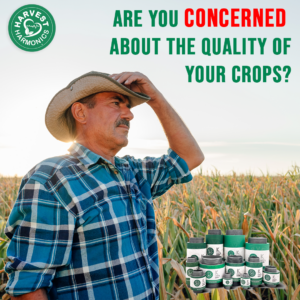What Are Good Agricultural Practice Standards in Farm Production Systems?

Good Agricultural Practice (GAP) standards are, “voluntary audits that verify that fruits and vegetables are produced, packed, handled, and stored to minimize risks of microbial food safety hazards. GAP audits verify adherence to the recommendations made in the U.S. Food and Drug Administration’s Guide to Minimize Microbial Food Safety Hazards for Fresh Fruits and Vegetables and industry-recognized food safety practices… GAPs focus is on post-harvest handling and proper cooling, handling, and storing of product. This can reduce spoilage, improve quality and ensure that you have the best quality produce for your customers” (U.S.D.A Agricultural Marketing Service, 2022). GAP audits set standards to positively regulate the combined actions that are carried out in the production of fruits and vegetables. These GAP standards include everything from the preparation of the land to the crop harvest, packaging and transport, product safety, the protection of the environment, and the health and welfare of workers.
The application of GAP standards and audits is currently not required. However, it is predicted in the future that GAP standards will provide a competitive edge in the larger local and international markets. Consumers are increasingly interested in obtaining safe and healthy food that has been produced in symbiosis with the environment and the well-being of farm workers. The GAP standards were born as new customer demands transferred to the suppliers. For the producer, the main advantage is being able to market a value-added product. The benefit for the consumer is in knowing that the produce is a safe, healthy, and high-quality food that when eaten does not present a health risk. These types of standards or certifications for a food product give the producer greater sales possibilities and better prices. Entering into GAP standards for producers means adopting previously proven management strategies, for which training on hygiene and safety, application of agrichemicals, handling during harvest, and others, is essential. It also means an expense or investment in time and money, both in training and in infrastructure, supplies, and services. The adoption of the GAP standards implies keeping records of all the farm activities that are carried out. This allows the producer to have a clearer and more organized vision of what is happening on the farm. In any case, each producer has to analyze the benefits of GAP certifications before embarking on this type of effort.
Good Agricultural Practice (GAP) standards were created out of a societal need for food safety. The current need for global environmental safety standards could push GAP standards to include agricultural environmental standards. These new standards could help society improve the health of the environment, reduce pollution overall, conserve biodiversity, and preserve natural resources, such as soil and water. The irresponsible use of agrichemical products has caused the global contamination of soil and water with chemical residues still remaining in the world environment today. The rising accumulation of agrichemicals in the global environment has caused a massive loss of biodiversity and ecology. Modern society’s most common agrichemicals have already done significant damage and are still poisoning humans, the environment, organisms, and all of ecology. Growing with reduced or no agrichemicals is good for the environment and has many benefits for farmers such as greater plant productivity and better soil health. This is maintained over time by avoiding the loss of soil fertility and preventing contamination of the water and soil. Good Agricultural Practice standards positively influence the well-being of farm workers and customers as the quality of life and hygiene are improved, health is attended to, and food borne poisoning is prevented.
There is clear importance of GAP standards in agriculture, world trade, in caring for the environment, and the well-being of workers. Harvest Harmonics Inc. shares these values and would like to introduce the Kyminasi Plant Booster (KPB) technology that can help farmers achieve increased yields, better crop quality, greater vigor, increased disease resistance, and more nutrient-dense food while improving the environment. KPB is an easy-to-install, ready-to-go, set of advanced custom micro transmitters that utilize greater than 3,000 low-frequency radio waves that are attached to an irrigation system. Kyminasi Plant Booster is activated when water first flows past it. KPB is custom-sized for each farm and designed to work with all crops planted in soil. No power system or maintenance is required. This KPB irrigation device uses an advanced signaling system to boost photosynthesis and crop yields in plants. KPB works on all sizes of farms and we now even offer a home garden version.
Over 20 years of biophysics research has led to this breakthrough in improving plant health and increasing crop yield. Biophysics is the science of using the laws of physics to enhance biological function. Our researchers have studied plants’ natural processes, namely root growth, nutrient and water absorption, and photosynthesis. The result is the most advanced crop booster technology in agriculture that attaches to a farmer’s irrigation system and uses water to amplify plants’ natural processes. Even animals fed with forage or fodder that has been treated with KPB have increased nutrient density and produce more yields, better quality, and more nutrient-dense milk, meat, and eggs.
Harvest Harmonics’ goal is to help farmers around the world grow healthier and better quality crops at lower costs. We help farmers achieve higher yields without harming the environment by rejuvenating the earth’s ecology and organic life through advanced new technology.
Contact us to Start Improving Your Crop Health and Yields Today!
Sources:
- (U.S.D.A Agricultural Marketing Service, 2022)
https://www.ams.usda.gov/services/auditing/gap-ghp
- The Food and Agriculture Organization of the United Nations
Press Room

Agricultural Technology for Farmers in India
Harvest HarmonicsTM New Biophysics Agricultural Technology For Farmers In India The Agricultural Biophysics technology, 20…
1

Organic Earth Tech, OETI, Launches One Million Dollar Technology
After hurricanes Maria and Irma, Puertorrican farmers are yet to receive the needed aid to recover. Organic Earth Tech…
0

Produce More From Less
CEO Harvest Harmonics Frank Arlia speaking at Replenish. Earth interview by Tia Kansara – London Climate Action Week. How…
0

Replenish Earth and the Environmental RE Talk Series
Replenish Earth and the environmental RE Talk Series event that reunited the top thinkers in the world Harvest Harmonics…
1
Related Posts
2024 India Just Agriculture Frank’s presentation
https://www.youtube.com/watch?v=g_4vdtXBVsA&ab_channel=HarvestHarmonics The Crop Booster by Kyminasi Plants consists of...


